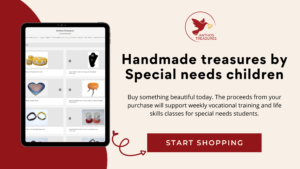
Attention-deficit/hyperactivity disorder (ADHD) is a brain disorder marked by an ongoing pattern of inattention and/or hyperactivity-impulsivity that interferes with functioning or development.
- Inattention means a person wanders off task, lacks persistence, has difficulty sustaining focus, and is disorganized; and these problems are not due to defiance or lack of comprehension.
- Hyperactivity means a person seems to move about constantly, including in situations in which it is not appropriate; or excessively fidgets, taps, or talks. In adults, it may be extreme restlessness or wearing others out with constant activity.
- Impulsivity means a person makes hasty actions that occur in the moment without first thinking about them and that may have high potential for harm; or a desire for immediate rewards or inability to delay gratification. An impulsive person may be socially intrusive and excessively interrupt others or make important decisions without considering the long-term consequences.
Attention Deficit Hyperactivity Disorder (ADHD)
The behaviour of students with ADHD is characterised by poor sustained attention, impaired impulse control, an inability to delay gratification and excessive task-irrelevant activity. Students may often fidget with their hands or feet, appear restless, leave their seat in the classroom or in other situations in which remaining seated is expected, may run about or climb excessively in situations where it is inappropriate, have difficulty playing or engaging in leisure activities quietly and may often talk excessively.
Students with ADHD find it difficult to plan and control their behaviour. They often seem unaware of danger and have a tendency to rush into things. They also find listening to, remembering and following through on instructions difficult and fail to finish school work. Students are often reluctant to engage in activities that require prolonged effort, are easily distracted by extraneous stimuli and often have difficulty organising materials required for participating in learning tasks. Students with ADHD have difficulty with sustained play and are often disliked by their peers because of their aggression, impulsiveness and inability to take responsibility for their actions.
The incidence of symptoms tends to decline in adolescence and adulthood but the disorder persists. Students with ADHD are often on medical treatment to mitigate the impact of the disorder on their daily lives.
Attention Deficit Disorder (ADD)
ADD is described as ADHD without the hyperactivity and is characterised by excessive daydreaming, frequent staring, cognitive sluggishness, lethargy, confusion, memory problems and social reticence. Student often blurt out answers before questions have been completed, have problems awaiting their turn and may frequently and unwittingly interrupt or intrude on others.
Strategies for Learning and Teaching
- Facilitate easy transitions between lessons. Consider the use of a clear signal to mark the end of one activity and the beginning of another.
- Encourage and promote support for the student from peers.
- Pre-establish consequences for misbehaviours.
- Provide regular, consistent and constructive feedback to the student. Reward more than you punish. Immediately praise any good behaviour or accomplishment.
- React to inappropriate behaviour by suggesting a positive alternative.
- Ignore minor inappropriate behaviour.
- To ensure as far as possible that the student is rewarded more often than he/she is reprimanded, use rewards in preference to sanctions.
- Set targets as a positive option for the student. See the completion of these targets as an opportunity to give a reward.
- Use concrete materials and computer assisted instruction.
- Structure teaching carefully and present new material in a step by step manner.
- Ensure you have student’s attention prior to issuing instructions.
- When directing a question towards the student, make sure you say his/her name first as a signal for the student to pay attention.
- Have the students keep their desk and immediate environment clear of distractions and put away items that are not in use.
- Seat the student at the front with his/her back to the rest of the class.
- Seat among well-focused peers, preferably those whom the student views as significant peers.
- Try not to have the student seated near distracting stimuli such as doors, windows, high traffic areas, etc.
- Avoid multiple instructions and complex directions, keeping instructions simple and as near to the one-sentence rule as possible. Be consistent with daily instructions.
- Assign only one task at a time to the student.
- Give extra time for certain tasks as often students may work slowly.
- Use teacher-modelling and direct instruction in order to demonstrate effective ways of completing a task.
- Use a variety of learning and teaching resources that are motivating for the student.
- Interact with the student in a calm manner.
- Ensure classroom routines are predictable.
- Provide advance
warning that something is about to happen/finish as these students can
experience difficulties at transition periods. - Present uncluttered text in worksheets.
- Utilise checklists for the student to work through when doing tasks and homework.
- Encourage the student to verbalise to the teacher what needs to be done and then reiterate the same silently to himself/herself.
- Directly teach concentration skills, the following of rules, self-management and organisational skills.
Consider allowing the student to wear earphones when completing tasks if this is found to promote greater levels of task-engagement. Perhaps permit the student to choose the music he/she wishes to listen to while wearing earphones.


